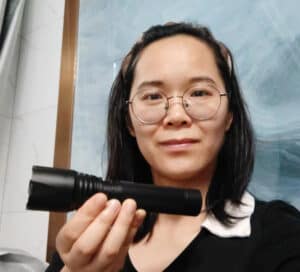Sometimes, purchasing smaller quantities can be necessary for businesses, especially when introducing a new product to the market. Buying a small amount allows companies to test the waters without committing to a large investment upfront. However, it can also present challenges when suppliers have minimum order requirements higher than the company’s needs. In such situations, businesses must find creative solutions to meet their needs while working within the supplier’s requirements.
Procuring products in small quantities can be challenging for buyers, especially when the factory’s minimum order quantity (MOQ) requirements far exceed the purchase needs. This situation can arise for various reasons, such as high production costs or packaging limitations. This article will discuss managing such scenarios and explore practical strategies based on a case study involving an order for LED flashlights.
By being flexible and creative, you can still get the products you need at a reasonable price. Here is an example of how we handle this for your reference.
Last June, we received a request from one of our European clients to purchase 500 LED flashlights with packaging boxes that had their design. We reached out to our factory, but they informed us that their minimum order quantity (MOQ) for this product was 1000 pieces, which exceeded the client’s needs.
We probed further, and the factory explained that the MOQ was due to their box supplier’s minimum order quantity for customized packaging boxes. They added that printing only 500 boxes would be wasteful and that the price per box would be higher than if they printed 1000 boxes. The factory suggested that if the client did not require customized packaging, they could order only 500 pieces.
Our client expressed that this was a new product for them, and they only required 500 pieces to test the market. However, they also needed customized packaging with their company logo on the box. They hoped that if the product sold well, they could place more orders in the future. Nevertheless, they wanted to avoid ordering too many products for their first order and eventually decided to purchase 1000 pieces.
After negotiating with the factory, we proposed three solutions to address the issue:
Order only 500 pieces, but pay an additional 0.3 USD per piece due to the MOQ of 1000 pieces.
Order 500 pieces of the product and print 1000 boxes. The remaining 500 boxes could be utilized for the following order. The client would only need to pay for 500 products and 500 boxes (0.5 USD per box) for the first order.
Order 500 pieces of the product and print 2000 boxes. The remaining 1500 boxes could be used for future orders, and the factory would offer a 3% discount because of the bulk order. The client would only need to pay for 500 products and 2000 boxes (including the discount) for the first order.
The client eventually chose option two because they could buy 500 products at the same price as 1000 pieces with customized box designs. If they sold 500 products, they could order another 500 in the following order and only pay for the product without the box. Even if the sales were poor and they no longer needed the products, they would only lose the money for 500 boxes, which was still better than paying an additional 0.3 USD per piece.
In the end, the client successfully sold all the products and placed an order for the remaining 500 pieces after a month. Their experience taught them that increasing the order quantity slightly to obtain better pricing and a larger discount was worth considering.
Our sales team had multiple conversations with the client and the factory throughout the negotiation process to understand their concerns and needs. The client was concerned about the cost and risk of ordering too many products, while the factory was worried about the cost of customized packaging and the waste of materials. By listening to both parties, we proposed three solutions that met their needs and helped the client make an informed decision.
This experience underlines the significance of effective communication and negotiation in business. By comprehending the requirements and concerns of all stakeholders, we can find solutions that satisfy everyone and help our clients achieve their goals.



32 Responses